Search Images
Browse Content (p. 580)
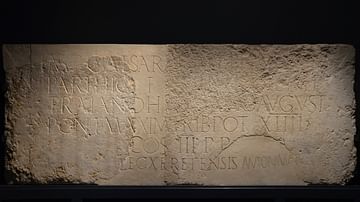
Image
Dedication to Hadrian by Legio X Fretensis
Inscription set up by the soldiers of Legio X Fretensis to coincide with the official visit of Hadrian to Aelia Capitolina in 130 CE. Israel Museum, Jerusalem. ”To the Imperator Caesar Traianus Hadrianus Augustus, son of the deified Traianus...
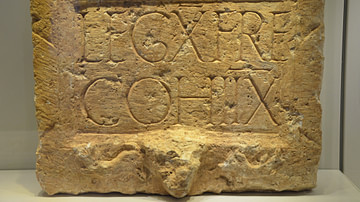
Image
Eighth Cohort of Legio X Fretensis
Inscription of the eighth cohort of Legio X Fretensis. From Jerusalem or Samaria, 1st-2nd century CE. Israel Museum, Jerusalem.
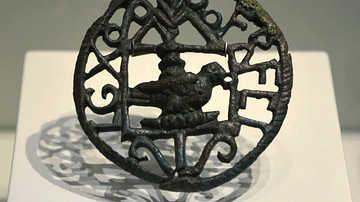
Image
Legio X Fretensis Inscription on a Sword Belt
Sword belt decoration with the inscription LG X FR FEL: Legio X Fretensis Felix (the fortunate), early 3rd century CE. Israel Museum, Jerusalem.
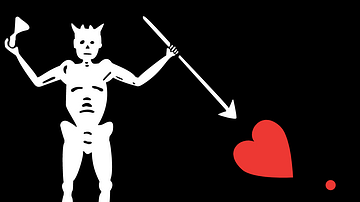
Image
Blackbeard's Flag
According to legend, the flag of the pirate Blackbeard, aka Edward Teach (d. 1718). The skeleton holds an hourglass to signify that the time of those about to be boarded is coming to an end. The bleeding heart warns of the death which will...
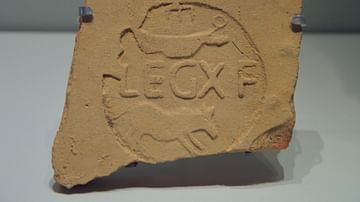
Image
Stamp of Legio X Fretensis
Tile fragment with a stamp of Legio X Fretensis, "LG X F", and its symbol, a wild boar and a battleship. Found in Jerusalem, 1st-2nd century CE. Israel Museum, Jerusalem.
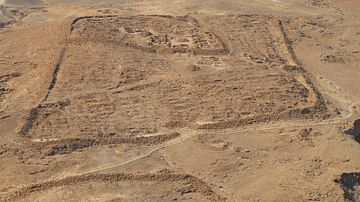
Image
Masada, Camp F
Remnants of Camp F, one of several legionary camps of Legio X Fretensis just outside the circumvallation wall around Masada (modern-day Israel). Legio X Fretensis participated in Vespasian and Titus’ battle against the Jewish Revolt of 66...
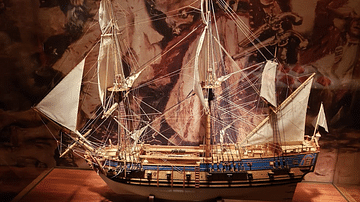
Image
The Queen Anne's Revenge
A model of the Queen Anne's Revenge. The ship was originally used for the transportation of slaves but was captured and converted into a 40-cannon pirate ship by Blackbeard, aka Edward Teach (d. 1718). (North Carolina Museum of History)
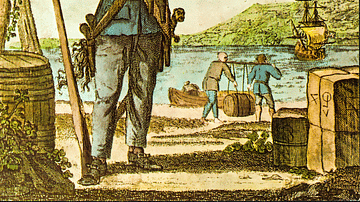
Image
Blackbeard or Edward Teach
A colourised engraving of the pirate Blackbeard, aka Edward Teach (d. 1718). First appeared in an 18th-century edition of a 'General History of the Robberies and Murders of the Most Notorious Pyrates' by Charles Johnson (likely a pseudonym...
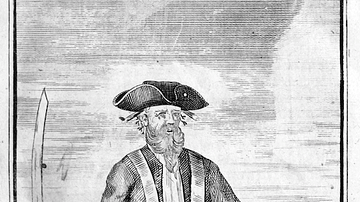
Image
Blackbeard
A c. 1724 engraved print by Benjamin Cole of Blackbeard, aka Edward Teach (d. 1718). First appeared in an early edition of a 'General History of the Robberies and Murders of the Most Notorious Pyrates' by Charles Johnson (likely a pseudonym...

Image
Blackbeard's Fight to the Death
A 1920 illustration showing the fight to the death between the pirate Blackbeard (aka Edward Teach) and Lieutenant Robert Maynard. In the battle at Ocracoke Inlet, North Carolina on 22 November 1718, Blackbeard was finally killed by five...